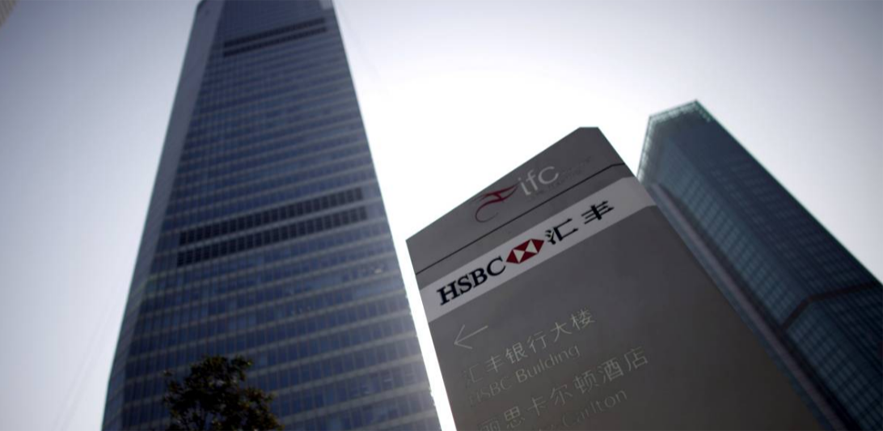
It's time for financial institutions to get serious on climate risk
Paul Fisher, Senior Associate, University of Cambridge Institute for Sustainability Leadership
7 September 2016
As environmental and climate risks surge, the world's financial system needs to take them into account – now.
This year’s G20 summit may go down in history as a watershed moment in how global leaders treat climate and other environmental issues in the context of the global economy.
What was mostly a social and political issue for a minority has been rapidly escalating over the past 18 months to become a matter of global politics and a hard commercial consideration, especially in the financial sector. The insurance industry has been on the case for some time, the wider asset management sector is increasingly involved, banking will surely follow. And in the real economy, the issues will start to affect all businesses, not just those in specific sectors.
In the coming months, G20 finance ministers and central bank governors will be presented with recommendations on disclosure standards for environmental risks, from a globally convened, private sector task force. Their report will focus on the information that companies should disclose to enable investors to assess how exposed they are to risks arising from climate change.
These risks include both the impacts of physical events like storms and droughts, should climate change proceed unchecked, as well as the policy, technology and even sentiment changes that are required if it is to be mitigated. And whatever one's beliefs about the causes of climate change, which some still challenge, the policy actions taken by governments will have a significant impact regardless.
Financial markets may soon be awash with comparable data. But are they ready to use it? Does the average chief risk officer treat the risk of ‘environmental’ shocks with the same weight as movements in interest rates or credit? The smart firms will, so the rest need to follow or risk losing out.
CISL’s Centre for Sustainable Finance has reviewed the state of practice across the global financial system. Some important innovations have been happening. Insurers are modelling the impact that extreme weather events can have on food prices, showing how plausible scenarios can result in sustained depressions of US and European stock markets of up to 10 per cent.
Central banks are now thinking and writing about how these scenarios could affect monetary and financial stability. Groups of investors are pooling resources, building models that reveal how the margins of multinational companies are impacted across their operations by different combinations of energy and carbon regulation. And credit rating agencies are using insurance data to show that climate change could increase the damage-to-value ratio for a sovereign by an average of 25 per cent given a climate-related catastrophe.
There is no doubt in my mind that this kind of analysis should be happening to inform everyday financial decision-making across the whole of the financial sector. Consider the case of two G20 countries high on the global news agenda right now.
In recent years, Brazil has suffered its worst drought in decades. The majority of the country’s electricity comes from hydroelectric dams. Shifting to thermal power generation meant that electricity prices soared by up to 70 per cent. Inflation followed. Had the resulting change in market prices been priced into prior valuations by investors?
Then, in the United States, there is the case of Peabody Energy, the world’s largest private sector coal producer by output, which filed for bankruptcy earlier this year. The firm cited 'unprecedented' factors such as a steep decline in prices and lacklustre demand from the Chinese. But another important part of the picture was the intense competition from cheap gas in the United States encouraged in part by the government’s broader decarbonisation plan. Did the firm’s creditors anticipate the abrupt impact of this 'environmental' risk?
Financial institutions have been addressing environmental risks in a low-key fashion for many years. This mainly has focused on ensuring that their clients or investments are not violating local pollution laws or causing such damage to the environment that they lose their license to operate. But there is a growing recognition within the sector that traditional approaches are insufficient in the face of environmental and related political risks; and efforts are now taking on whole new characteristics of scale, likelihood and interconnectedness.
To its credit, the Chinese government has ensured that the G20 has prioritised this issue during its 2016 chairmanship. G20 nations have spent time this year considering the role of regulators in ensuring that issues associated with the economic transition required to deal with climate change are seen in terms of hard financial risk and return, not just something for environmental campaigners to worry about. And that finance is available to support the huge investments required to mitigate climate change and clean up the environment. This is vital. China, for instance, says it needs around $460 billion annually to finance its green investment programme.
Unless the institutions controlling so much of the world’s capital are fully sensitised to these risks and opportunities, they won’t seek innovative solutions with the determination and focus that is so badly needed.
But there are challenges to integrate such innovation into mainstream practice and good reason for regulatory attention. The need to make good quality, relevant data available is well understood. Knowing how to process that data by connecting scenario analysis to financial impacts requires multidisciplinary expertise that is not often found within a single institution. And much of what is labelled as ‘environmental’ risk is considered novel – or, worse, not believed' – by some senior management and so the necessary resources to bring together such expertise are not always made available.
G20 Leaders have said they believe that greater efforts should be made to encourage and facilitate knowledge sharing on environmental and financial risks. Public, private and academic institutions must work together in a focused manner. Great skill will be needed to cross boundaries so that deep pockets of expertise can be made relevant to others. We all have an interest as individuals in this happening. But very soon the commercial imperatives will require it. It's time for the corporate sector to get serious.
CISL’s Centre for Sustainable Finance is a research hub on financial market reform to help governments, financial institutions and businesses build a sustainable financial system. The Centre builds on CISL’s work with the financial system, much of which has taken place since the global financial crisis of 2007/08.
This piece was originally published by the Thomson Reuters Foundation.





